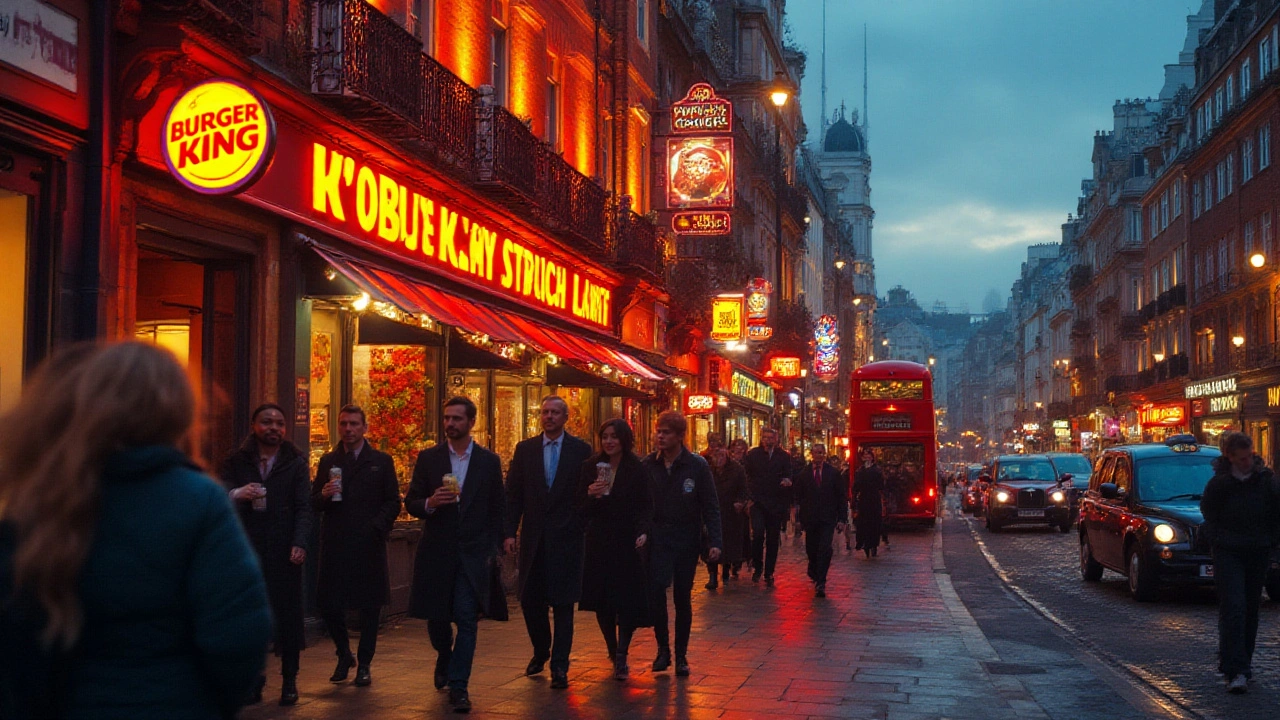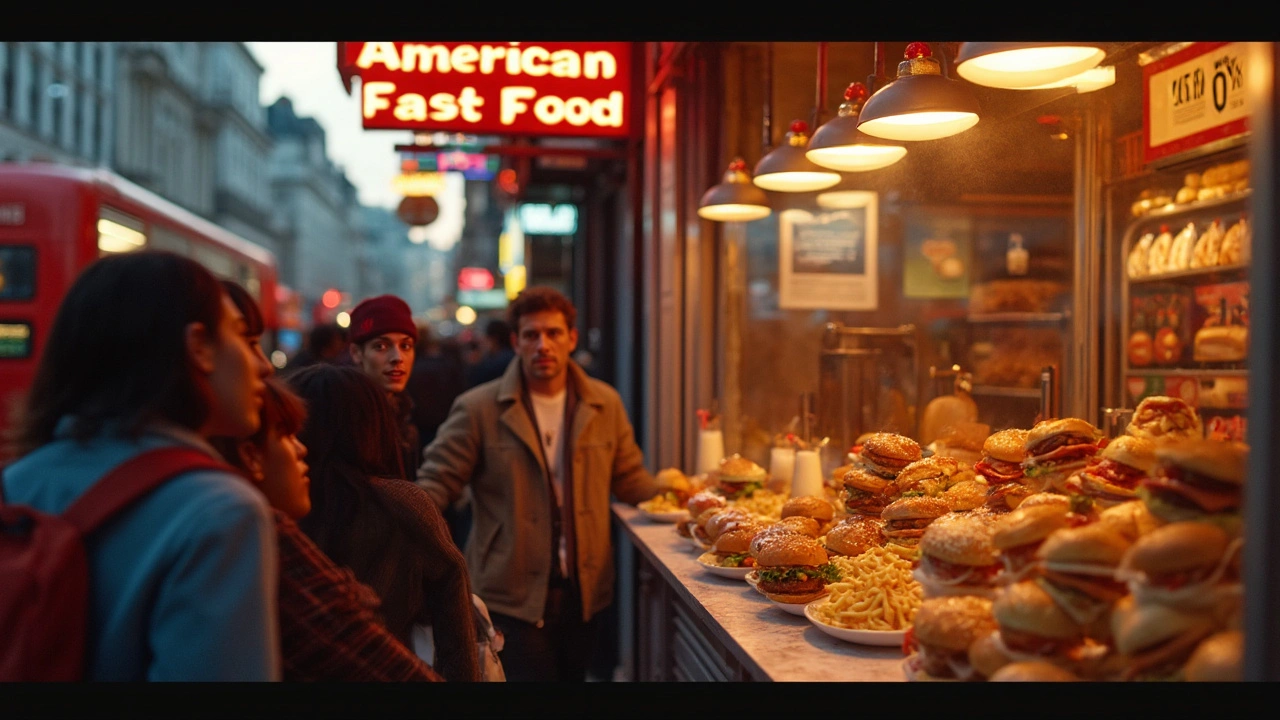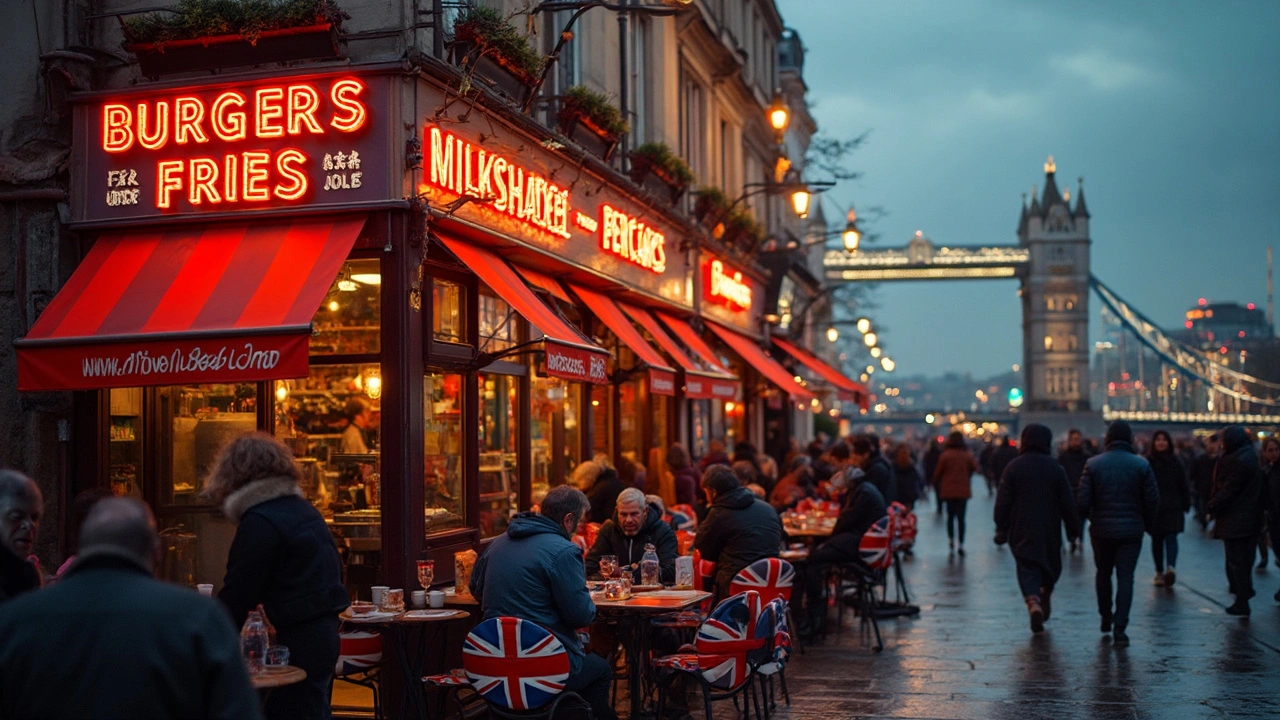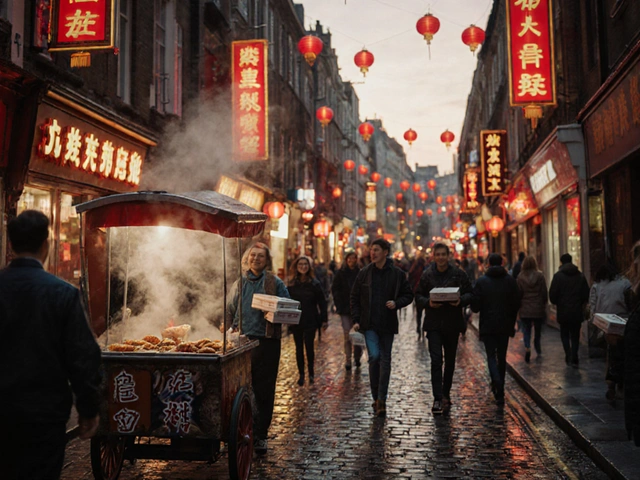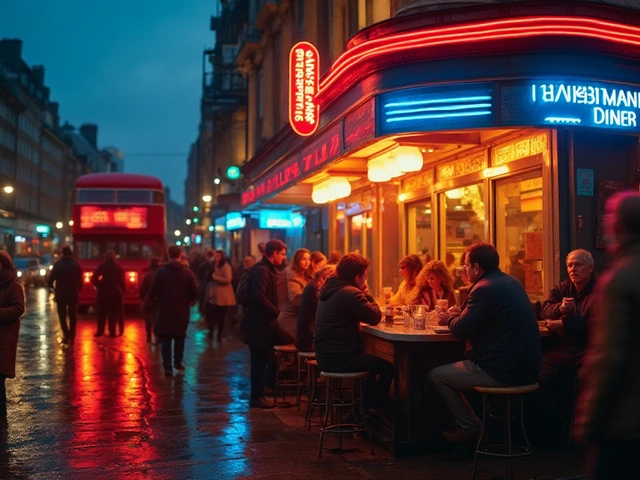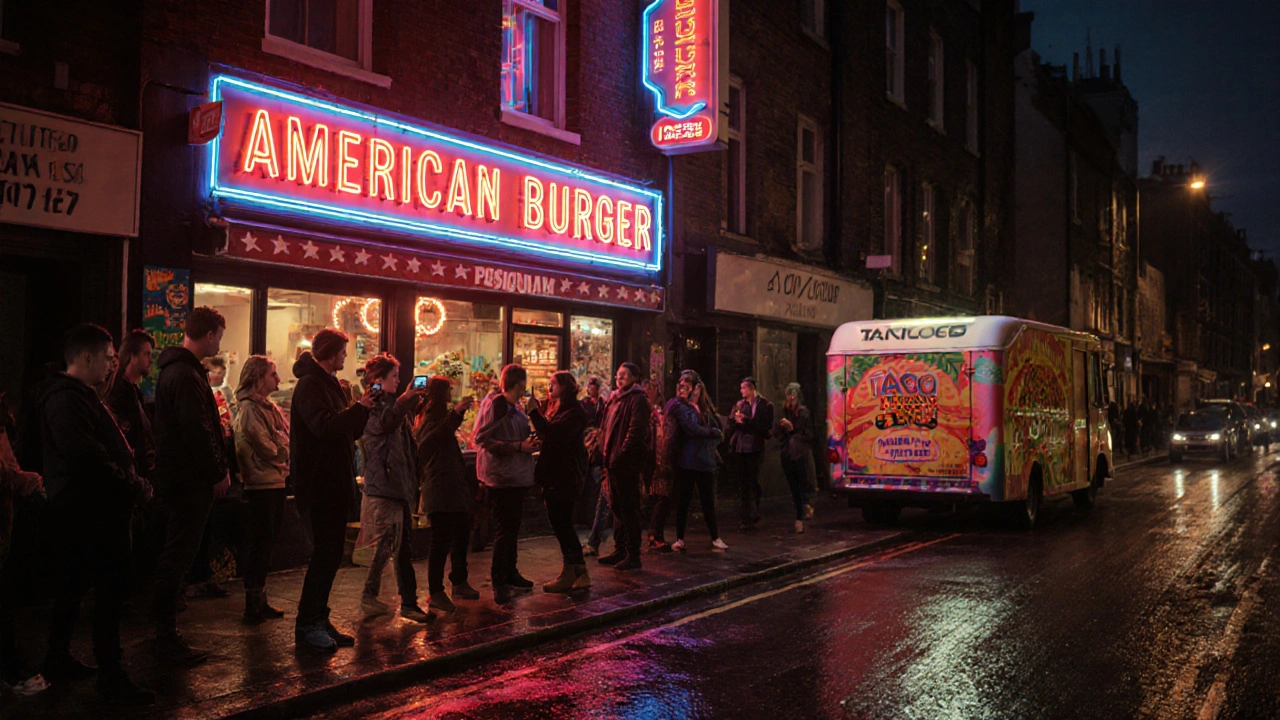
Key Takeaways
- American fast‑food chains have multiplied in London over the last five years, with new entrants like ShakeShack and FiveGuys reshaping the city’s burger scene.
- Menu‑innovation (e.g., plant‑based burgers, Nashville‑style chicken) is the main driver of hype, especially on delivery platforms.
- Neighbourhood hotspots such as Shoreditch, Brixton and Canary Wharf host the densest clusters of US‑style quick‑service restaurants.
- Price points remain competitive with traditional UK fast food, but premium‑style chains charge £8‑£12 for a main meal.
- Consumers value speed, Instagram‑ready ambience and diet‑friendly options, pushing brands to adapt locally.
London’s love affair with American fast food isn’t new, but the pace of new openings, limited‑time offers and delivery‑only concepts has surged. If you’ve walked past a neon‑lit burger joint on Brick Lane or seen a taco truck rolling down Camden Market, you’ve witnessed a cultural shift. Below we unpack why these brands are thriving, where they’re popping up, and what you can expect the next time you crave a taste of the US on the other side of the Thames.
American fast food is a style of quick‑service cuisine that emphasizes speed, standardized menus, and iconic items like burgers, fried chicken, and tacos, originally popularized in the United States. When this model meets London’s multicultural palate, the result is a blend of familiarity and novelty that fuels both nostalgia and experimentation.
What’s Driving the Rise?
Three forces are pushing American fast‑food brands into the capital’s streets:
- Consumer demand for bold flavours and convenience. Londoners increasingly order meals on apps such as Deliveroo and Uber Eats, where US‑style chains rank among the top‑searched categories.
- Expansion strategies that target high‑traffic urban districts. Brands open flagship stores in trendy quarters to generate buzz and then roll out smaller “express” units.
- Menu localisation. Chains tweak recipes to include British‑sourced ingredients, veg‑friendly alternatives, and limited‑time UK‑exclusive items (think a Guinness‑infused burger).
These trends mirror a broader global appetite for American cuisine, but London’s density of office workers, tourists, and nightlife fans makes it a particularly fertile ground.
Major Players and Their Hot Spots
Below is a snapshot of the most talked‑about US fast‑food chains that have planted roots in London, along with the neighbourhoods where they draw the biggest crowds.
- BurgerKing is a global burger chain known for flame‑grilled patties and the Whopper, operating over 70 locations in Greater London. Their flagship at Piccadilly Circus offers a 24‑hour menu.
- KFC is a fried‑chicken fast‑food giant famous for its Original Recipe and extra‑crispy buckets, with 50+ London outlets, including a pop‑up in Covent Garden.
- TacoBell is a Mexican‑inspired fast‑food chain offering tacos, burritos and the iconic Crunchwrap, currently operating 12 UK sites, mainly in Shoreditch and Westfield Stratford.
- ShakeShack is a premium burger brand originating from New York, with a focus on fresh‑ground beef and craft sodas; London locations include Soho, Marylebone and Canary Wharf.
- FiveGuys is a American burger chain famed for customizable toppings and hand‑cut fries, now with 9 sites across Camden, King's Cross and Wimbledon.
- Popeyes is a Louisiana‑style chicken chain known for its spicy fried chicken and buttery biscuits, recently opened a flagship in White City.
How to Spot the Hottest Locations
If you’re hunting for the next big fast‑food buzz, here’s a quick guide:
- Shoreditch - Home to the newest TacoBell and several pop‑up concepts that experiment with limited‑edition sauces.
- Brixton - A hotspot for KFC's “Extra Crispy” trials and the occasional food‑truck‑style chicken sandwich.
- Canary Wharf - Where ShakeShack’s sleek glass façade draws business‑district crowds during lunch.
- Camden Market - The go‑to spot for FiveGuys “build‑your‑own” burger stations at weekend markets.
- White City - The newest Popeyes location sits next to the Westfield shopping centre, making it a magnet for families.
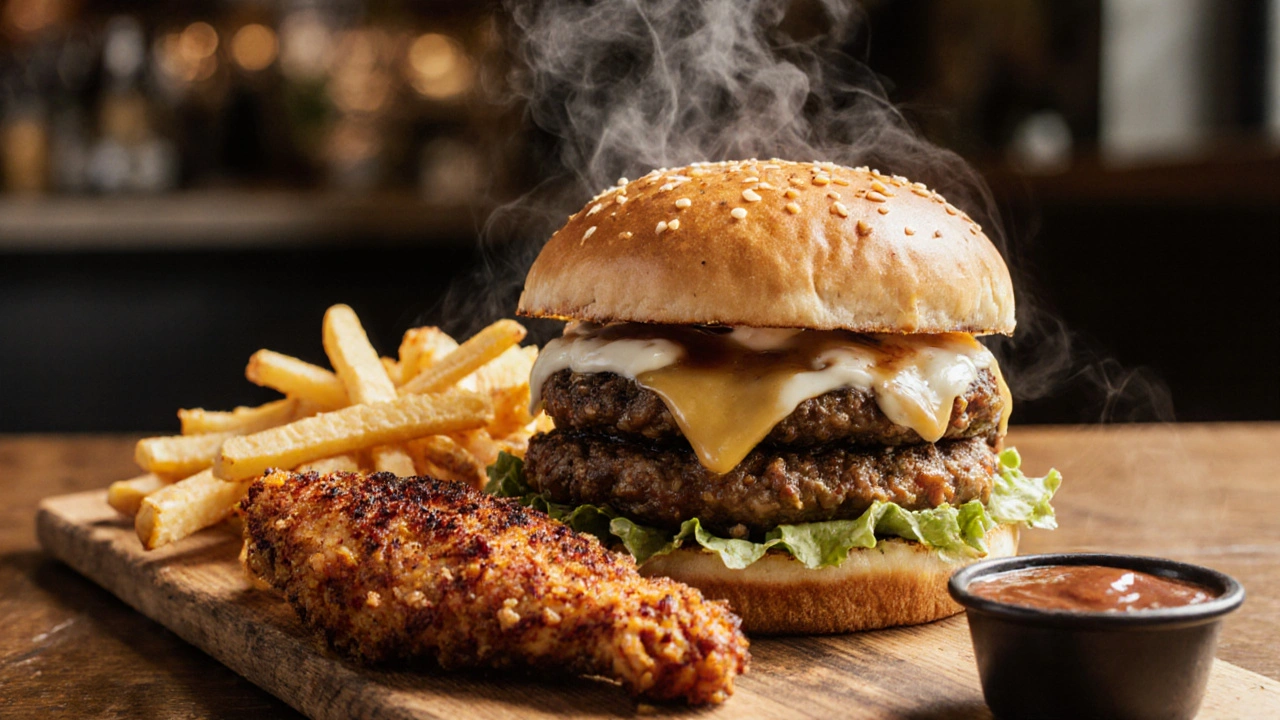
Menu Innovations That Keep People Coming Back
American chains are no longer just selling the classic burger‑and‑fries combo. Here are the standout menu items that have captured London’s attention:
- Plant‑based patties - BurgerKing’s “Impossible Whopper” and ShakeShack’s “Beyond Burger” both hit the UK market in 2023 and have become permanent menu fixtures.
- Nashville‑style hot chicken - KFC introduced a spicy “Nashville Bucket” in 2024, prompting long queues at the Soho outlet.
- Regional sauces - TacoBell’s “British BBQ Chipotle” sauce blends American chipotle with a hint of smoky malt vinegar, available for a limited time.
- Premium toppings - FiveGuys now offers truffle aioli and aged cheddar on request, appealing to the “food‑ie” crowd.
- Early‑bird breakfast menus - ShakeShack’s “Morning Chicken Biscuit” launched in 2025, targeting commuters in the financial district.
Price Points and Value
While some premium US chains charge a little extra, most stay within the £6‑£12 range for a main meal. Here’s a quick snapshot:
| Chain | Typical Main Meal Price | Value Extras |
|---|---|---|
| Burger King | £7.99 | 2‑for‑1 Whopper on Tuesdays |
| KFC | £8.50 | Free sides with 2‑piece combo |
| Shake Shack | £10.50 | Seasonal milkshake discounts |
| Five Guys | £9.75 | Free topping upgrade after 3 visits |
| Popeyes | £8.20 | Combo meal includes biscuit |
How Delivery Apps Amplify the Trend
Food‑delivery platforms are a major catalyst for the American fast‑food boom. Data from Food delivery apps is a digital services like Deliveroo, Uber Eats, and Just Eat that connect consumers with restaurants for at‑home dining shows that US‑style burgers rank in the top three most‑ordered categories in London, accounting for a 12% increase in overall fast‑food orders year‑over‑year.
Many chains now launch “delivery‑only” menus featuring items not available in‑store-think a TacoBell “Midnight Crunchwrap” or ShakeShack’s “Late‑Night Slider Pack”. These exclusive offerings drive app downloads and keep the buzz alive after the lunch rush.
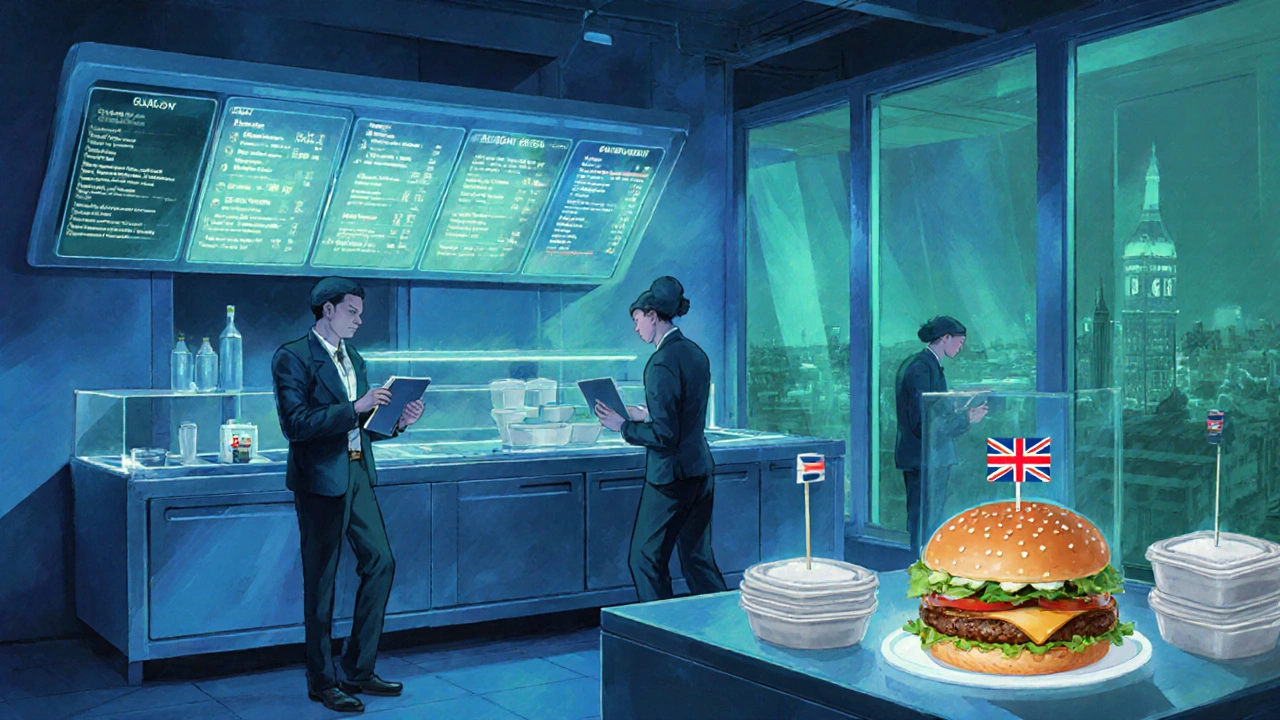
What to Expect When You Walk In
Stepping into a US fast‑food outlet in London feels both familiar and freshly tweaked. Expect a bright colour scheme, open‑kitchen layouts and a loud, upbeat playlist. Most locations now provide free Wi‑Fi, contactless payment and self‑order kiosks that speed up the line. For the health‑conscious, ask staff about plant‑based options or gluten‑free buns-most chains have clearly labeled choices on the menu board.
Future Outlook: Where Is the Trend Heading?
The next wave looks set to blend technology with sustainability. Anticipate:
- More “ghost kitchens” that operate solely for delivery, reducing real‑estate costs.
- Expansion of zero‑waste initiatives, such as reusable packaging pilots by ShakeShack.
- Regional collaborations-expect a limited‑edition burger co‑created with a famous London chef.
- Increased focus on low‑sugar drinks and sparkling water alternatives.
London’s appetite for American fast food isn’t waning; it’s evolving. Keep an eye on the neighbourhoods mentioned above, and you’ll be first in line for the next big craze.
Quick Comparison: US Fast Food vs. Traditional British Fast Food in London
| Aspect | US Fast Food | British Fast Food |
|---|---|---|
| Core Menu | Burgers, fried chicken, tacos | Fish‑and‑chips, pies, sausage rolls |
| Portion Size | Often larger, combo‑focused | Smaller, snack‑oriented |
| Flavor Profile | Bold, spicy, sweet‑savory combos | Milder, traditional British herbs |
| Health Options | Plant‑based patties, low‑calorie wraps | Limited vegetarian choices |
| Ambience | Bright, media‑rich, Instagram‑ready | Casual, often take‑away only |
Frequently Asked Questions
Why are American fast‑food chains expanding so fast in London?
The expansion is fueled by high consumer demand for convenient, flavor‑forward meals, the success of delivery‑only models, and aggressive localisation strategies that adapt US menus to British tastes.
Are the prices higher than traditional UK fast food?
Generally, US‑style chains charge a modest premium-about £1‑£3 more per meal-thanks to premium ingredients and branding, but promotional deals often narrow the gap.
Do these chains offer vegetarian or vegan options?
Yes. BurgerKing, ShakeShack, and FiveGuys all have plant‑based burgers, and many locations serve vegan nuggets or dairy‑free sauces.
Can I order US‑only items online?
Delivery apps frequently feature exclusive items-like TacoBell’s limited‑edition sauces or ShakeShack’s midnight sliders-that aren’t available in the restaurant.
What neighbourhoods should I explore for the best US fast‑food experience?
Start with Shoreditch for TacoBell pop‑ups, Canary Wharf for ShakeShack, Brixton for KFC experiments, and Camden for FiveGuys market stalls.
Comments (8)
- Nitin Murali
- October 10, 2025 AT 15:33 PM
The superficial allure of neon signage belies the commodified homogenization of culinary culture.
- Timothy Mayle
- October 11, 2025 AT 19:20 PM
One might contend that the diffusion of American fast‑food aesthetics across London exemplifies a form of cultural dialectic, where tradition encounters globalization. The streets of Shoreditch become a micro‑arena for this exchange, subtly shifting consumer sensibilities. Yet, the underlying desire for speed and visual appeal remains constant, echoing a broader human penchant for immediacy. :-)
- David Blair
- October 12, 2025 AT 23:06 PM
From a market‑entry perspective, the proliferation of US‑style quick‑service concepts leverages a multi‑channel distribution framework, integrating omnichannel touchpoints such as brick‑and‑mortars, ghost kitchens, and delivery‑only menus. 📈 This synergistic approach not only optimizes CAC (Customer Acquisition Cost) but also enhances LTV (Lifetime Value) through localized menu iterations. Moreover, the brand equity transfer is amplified via Instagram‑centric ambience, fostering organic user‑generated content. 🚀 Rest assured, the trajectory appears sustainable, provided the chains maintain agile supply‑chain logistics and culturally resonant offerings.
- Stephen Robinson
- October 14, 2025 AT 02:53 AM
Honestly, I think the hype around American fast‑food in London is overblown. While the numbers look impressive, many of these outlets simply rehash the same menu with a slightly flashier interior. If you ask me, the true culinary excitement still lives in the local fish‑and‑chips shops and the eclectic street food stalls. But hey, if a glossy burger fits your Instagram aesthetic, go for it.
- anne tong
- October 15, 2025 AT 06:40 AM
In contemplating the semiotic significance of neon signage, one must first acknowledge the historical lineage of visual marketing as a conduit for collective identity formation. The chromatic brilliance that adorns the facades of Burger King or ShakeShack functions not merely as illumination, but as a beacon of capitalist promise in the urban nightscape. This promise, however, is often couched in the language of convenience, subtly coaxing the passerby into a transactional relationship with the commodified palate. The resultant homogenization, as observed across disparate boroughs from Camden to Canary Wharf, engenders a palpable erosion of culinary distinctiveness. Yet, paradoxically, the very ubiquity of such establishments engenders a shared referential framework through which Londoners negotiate belonging. The act of ordering a plant‑based Whopper, for instance, simultaneously signals environmental awareness and participation in a globalized fast‑food culture. Such duality illustrates the complex dialectic between individuality and conformity that permeates contemporary urban consumption. Moreover, the strategic placement of these venues within affluent districts underscores the socioeconomic stratification inherent in gastronomic access. While the working class may gravitate towards traditional fish‑and‑chips, the aspirational middle class embraces the glossy aesthetic as a status symbol. It is within this tension that the true narrative of American fast‑food's ascendancy in London unfolds. The sensory allure of crisp chicken, seasoned fries, and the occasional guacamole does more than satisfy hunger; it enacts a ritual of modernity. In this ritual, the consumer is both actor and audience, performing for the omnipresent lens of social media. Consequently, the Instagram‑ready ambience functions not as mere decoration but as a performative stage for identity construction. Ultimately, the superficial allure you mention masks a deeper, systemic alignment of corporate strategy with cultural consumption patterns. Thus, the phenomenon warrants continued scholarly scrutiny, lest we overlook the subtle ways in which the neon glow reshapes urban cultural topography.
- Brent Rockwood
- October 16, 2025 AT 10:26 AM
Interesting points, but there’s a minor slip: you wrote “the streets of Shoreditch become a micro‑arena.” Since “streets” is plural, the verb should be “become,” which you used correctly-good catch! However, the phrase “subtly shifting consumer sensibilities” would read smoother as “subtly shifting consumer sensibilities.” Also, consider hyphenating “micro‑arena” for consistency with other compound modifiers. Overall, solid analysis.
- Sarah Kavanagh
- October 17, 2025 AT 14:13 PM
That makes sense; the mix of brick‑and‑mortar and delivery‑only spots really does keep things fresh. It’s cool how the chains adapt menus for locals while still keeping the classic vibe.
- Angie Angela
- October 18, 2025 AT 18:00 PM
Wow, you really missed the mark here. Calling the whole thing “overblown” ignores the data showing a 12% rise in orders, and your “fish‑and‑chips” excuse is just lazy. If you can’t appreciate how these brands are innovating with plant‑based options and regional sauces, maybe you should stick to the old‑school stalls you love.

